Long interested in the sacred moments of transition between this world and the next, I have read many accounts. Early Quaker martyrs Mary Dyer and William Robinson were sustained by an influx of divine love and communicated their experiences of being in paradise during their final days. Robinson wrote that God’s love flowed through him to all of creation. Mary Penington described accompanying her husband, Isaac, at his death and seeing him in his own “mansion” in heaven. Apart from a few impressions like this, Quakers have focused mostly on making earth more like heaven, and have written little about the transition to the next life. In a recent QuakerSpeak video, “On Quaker Deathways,” Quaker hospice chaplain Carl Magruder encourages Friends to share our experiences related to death and dying.
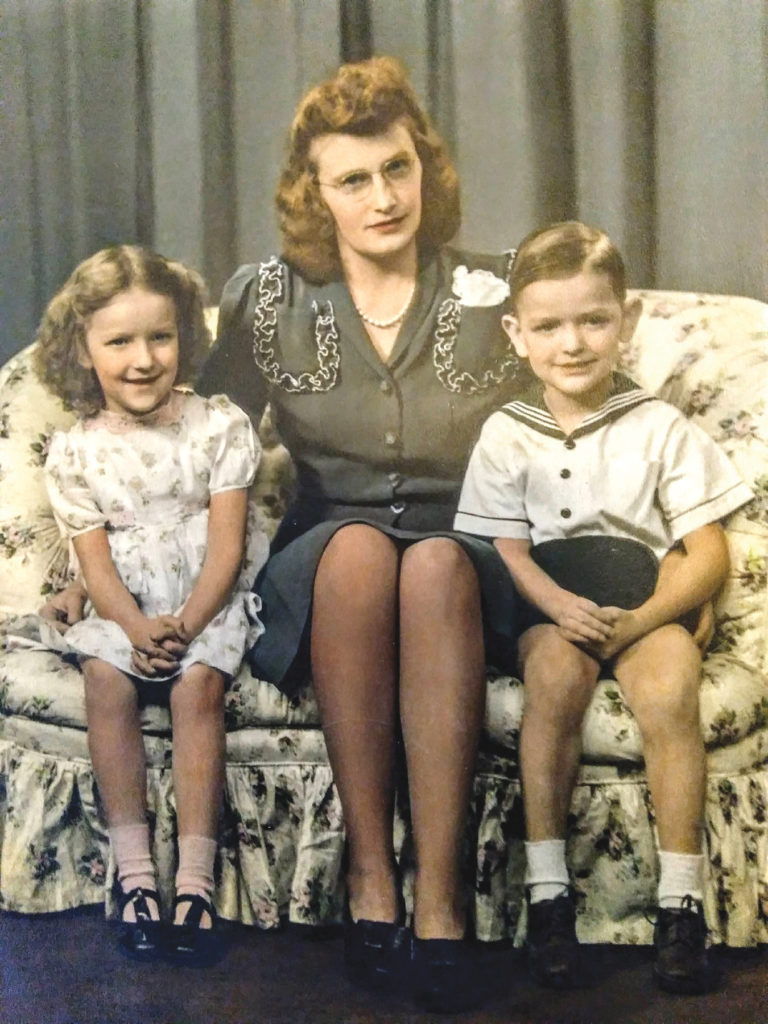
The author’s grandmother, Mamie Silvernail Meyers, with her children Jean (the author’s mother) and Chuck. Photo courtesy of the author.
My Grandmother
The oldest daughter in a large, rural family early in the twentieth century, my grandmother and her many siblings were born at home. She told me that some of them died at birth or soon after. Whether an infant or adult, the bodies of the recently deceased were washed; dressed; and laid out in the parlor, the body preserved with ice until burial. Visitors came to be with the grieving family.
After my grandmother’s death, my family planned her wake and memorial service. My grandmother had not been a church attender, so the funeral home worked with us to arrange not only for the body and burial, but also for the memorial service. I shared with them the wonderful format used for Quaker memorials, and my family decided to include the practice of allowing anyone to share memories of my grandmother. Many people spoke, and it was a deeply touching event. Even the funeral home employees had tears. They told us they had never attended such a moving service.
Though Quaker practice served us well in planning the memorial service, I felt at a loss during the experience of the wake, which preceded it. My grandmother’s body was in an open casket. One by one, family and friends came close and said their final goodbyes. When it was my turn to stand by the casket, I was saddened to see the thick make-up on her face that had been applied by the funeral home staff. I realized that at the end, my grandmother’s body had been handled by strangers, not by people who loved her. I felt a gentle impulse from within, a sense that it would be helpful to her transition from this life to the next if I touched her body in a loving way. It was almost as though her soul was silently calling out for help, drawing me to put my hands on the sides of her face.
When I did so, I was startled by a strong sense of contact. I don’t know if anything happened with her soul, but something powerful happened to me. I became aware of untold generations of life having been passed from one body to the next. My mother’s body had come through my grandmother’s, and my body had come through my mother’s. And before that, for uncountable generations and millennia, there had been an unbroken transmission of life from the body of one woman to her children, and through her daughters to the next generations. Touching my grandmother’s body after her death connected me in an unexpectedly powerful, visceral way to life, helping to ground me better on earth.
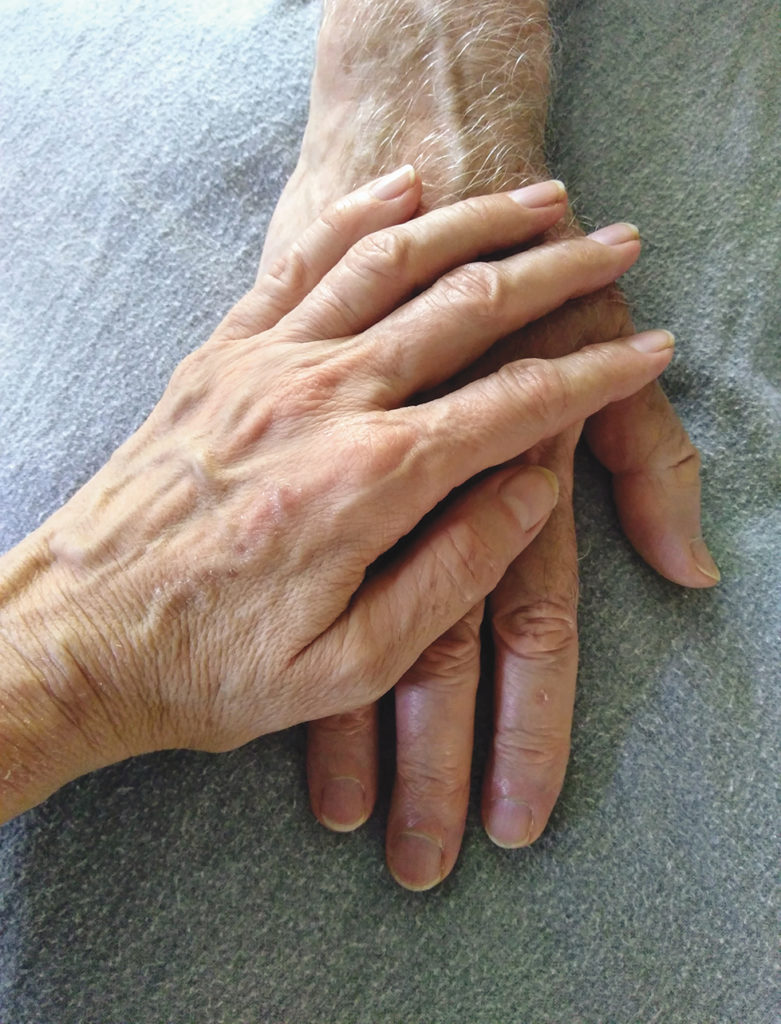
Photo courtesy of the author
Janet
When I stood beside the recently deceased body of a fellow Quaker named Janet, I remembered the experience of touching my grandmother’s body. I happened to be with Janet’s body because someone from the hospital had called me when Janet was brought in, unconscious. She had been outdoors sweeping her sidewalk when she had a massive heart attack. At the hospital, they did not find any ID in her coat pockets, only a flier for an upcoming gathering I had given Janet the day before. Printed in bold letters on top were the words “Hasten Unto God,” the title of an essay by Thomas Kelly. At the bottom, my name and phone number were given as contact information, so a staff member at the hospital called me. Could I tell them more about this person’s identity? Someone in the hospital thought they recognized her as a woman named Janet. I called the clerk of Janet’s meeting, who told me that Janet lived alone and had no family nearby. When we learned that Janet had just died, we decided that the two of us and our partners would go to be with her body, four Quakers representing Janet’s faith community. I called the woman who served as Janet’s spiritual nurturer and asked her to also pray for Janet. At the hospital, the staff said that we four Quakers could have half an hour with the body before they cleared the room.
Janet had a tube in her throat, which had been used during the unsuccessful resuscitation attempt. The four of us stood on the four sides of the hospital bed, and held Janet in the Light. Remembering my experience at my grandmother’s wake, I felt that perhaps it would be helpful to Janet’s soul, in its transition, if I lovingly touched her body. So I put my hand over hers as I held her in the Light. When a member of the hospital staff came to tell us it was time to leave, they also said it had been surprising to find the flier in Janet’s coat pocket with the words “Hasten Unto God.”
That night I had a startling dream. In the middle of the night, Janet was suddenly standing beside my bed, with a hand on my shoulder. I woke from this experience wondering if it had been merely a dream or if Janet’s soul had actually visited me. Whether a dream or a visitation, her touch on my shoulder had communicated two things: the first was gratitude for my hand on hers in the hospital and for the prayerful presence of members of her faith community with her in her transition after death.
Janet’s touch also communicated something more. I felt that she was urging me to “hasten unto God,” telling me that it was urgent for me to put my life in order. I needed to notice things that didn’t seem right. I’d been having dreams of having a fatal illness: warnings that if I didn’t change, I was risking my life. The day before, at the meeting of our peer group for spiritual nurturers, I had told Janet about these dreams. At lunchtime afterward, she had cautioned me about a decision I was considering. Janet’s sudden death and her touch in the night communicated to me that I needed to pay attention to those warnings. I needed to discover what was necessary in order to choose life. In the year that followed, I explored what it was that was not supportive of my life. Step by step, I made significant changes.
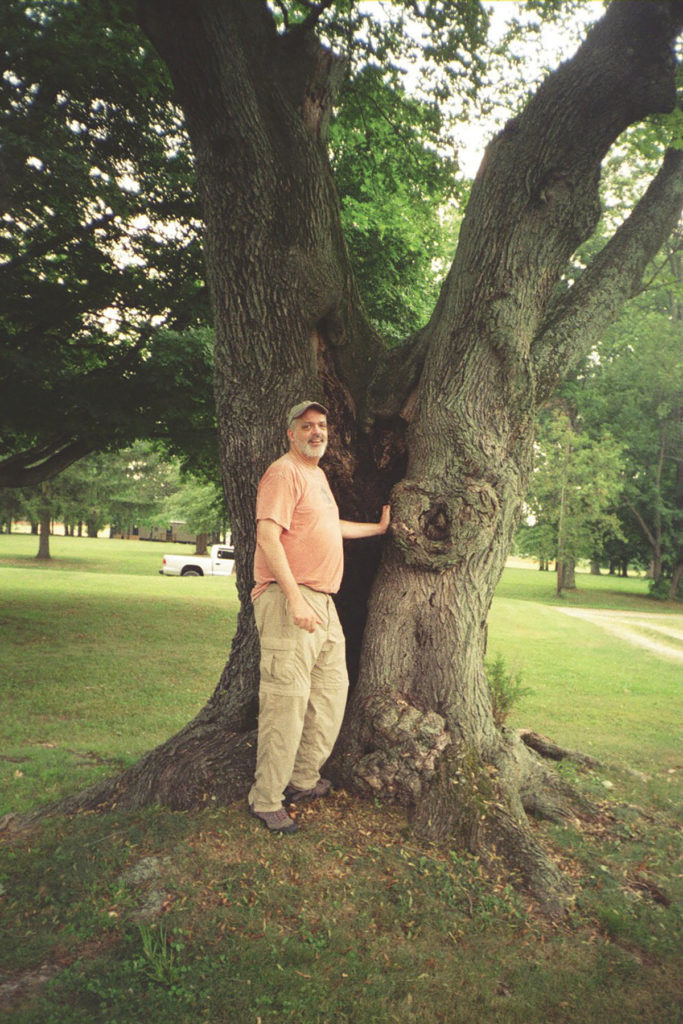
The author’s friend Jim in 2008, about two years before he died. Photo courtesy of the author.
Jim
While he was in hospice, my friend Jim told me that he’d had several experiences of entering into heaven: moments when the heaviness of his body in his hospital bed faded, and he felt he entered into a realm of pure love, infused with light. He was joyfully welcomed by his father, who had died many years before, and also by his grandfather, whom he had never met. He also felt himself being embraced from behind by God, as though he were sitting on God’s lap.
“Heaven is right here but in a different dimension,” Jim told me.
He was not afraid of death but didn’t feel ready to die. In particular, he was not ready to leave behind his teenage children. He did everything he could to remain alive after being diagnosed with an aggressive form of brain cancer.
Jim and I were both members of Chestnut Hill Meeting in Philadelphia, Pa. For years, we hardly spoke to each other, merely nodding or smiling in greeting. When Jim joined the Worship and Ministry Committee, he volunteered to support me in offering meetings for prayer and healing at the meetinghouse. Later, my housemate invited him to play his violin at an event held in our backyard. After that, Jim and I took some walks together and went out to dinner at a Chinese restaurant; for several months, we engaged in a romantic relationship. We both had many other priorities in our lives, however, and found that there wasn’t time enough for a relationship beyond friendship.
Along with his mother, Audrey, I accompanied Jim before and after his first brain surgery. But because I had moved away and transportation was difficult, we saw each other rarely during the next year and a half. We mostly spoke on the phone. A few weeks before his death, however, he was moved to a hospice setting that I could reach by train. I visited him there on weekends. Many visitors came, and most of them spoke of Jim’s service to them. One woman said she met Jim one cold day while walking home with a bag of groceries in one arm, pushing her baby in a stroller with the other. Jim, a stranger, had stopped his car beside her and asked if he could give her a ride somewhere. Several other visitors had attended Alcoholics Anonymous meetings with Jim for years and spoke of how helpful and encouraging he had been.
On the weekend before his death, Jim was no longer speaking, but it was clear he was hearing and appreciating the stories people recounted about his life. Toward the end of the visit, his mother asked me to feed Jim his dessert, a banana pudding. I spooned it into his mouth, one slow bite at a time.
A few days later, by email, I learned that the banana pudding was one of the last solid foods Jim ate. I thought about what I would say to him if I had another chance to be with him before he died. I read about Ira Byock’s advice in The Four Things That Matter Most, about what dying people most need to hear. The next Saturday, I rose early and took the train. When I arrived, Jim’s wide face had no expression; his eyes were nearly closed, and there was no response to my touch or greeting.
A sign on the wall requested non-family members to restrict their visits to 15 minutes. But I had been Jim’s last girlfriend, and his mother and sister, Kathleen, invited me to stay as long as I wanted. They assured me that my quiet presence was just what he needed.
When they went to have their lunch, I began to tell Jim the things I needed to say. I didn’t know if he could hear or understand my words, but I knew it was important to say them, as simply as possible. These were our precious last moments alone together.
“Thank you, Jim,” I said, remembering how generously he had helped me and others.
“I love you.”
The next piece was harder to say. I felt a heaviness that I still carried in my heart because our romance had not worked out the way we’d hoped. I struggled with words I knew I needed to say.
“I forgive you,” I said finally.
My heart felt lighter. I hoped that his did, too. I neglected the fourth phrase that Byock recommends: it didn’t occur to me that day to ask for Jim’s forgiveness. I didn’t know yet that I needed forgiveness, too.
In silence, I moistened his lips with a little sponge and considered how else I could be helpful in Jim’s transition to the next life. From my reading about Buddhist practices, I had learned that saying short phrases at the side of a dying or recently dead person could help their soul at such a time. Holding Jim’s hand, speaking slowly and gently, I said other things that I thought might support him to let go and move into the heaven that is right here, in another dimension.
“You’ve done a good job.”
“You’ve been a blessing to so many people.”
“You can let go into the Light now, the Light of your true being.”
I quietly played the Shaker music that Jim had requested a few weeks earlier.
When his mother and sister came back into the room, one sat on the far side of the bed. His sister sat down beside me and took Jim’s hand. I put my hand on the side of his face. His mother told me it had been five days since Jim had eaten any food, and four days since he had taken any water.
“This has been so hard,” she said, referring to everything that had happened since Jim’s diagnosis.
Music played quietly. The violin in the Shaker songs reminded me of Jim playing his violin in my backyard. It had been a warm night, and he had momentarily stopped to wipe the sweat from his brow, blessing me with his radiant smile.
Audrey, Kathleen, and I sat together quietly. Nurses came in and out. Outside the window, I could see trees swaying strongly.
Late in the afternoon, there was a long gap in Jim’s breathing.
The three of us held our breath as we waited, until, finally, Jim took another breath. From that moment on, his breathing was labored, with frequent gaps. Each time he stopped breathing, we drew closer. His mother laid her head on Jim’s big chest and waited for the next breath. For the next two hours, the three of us waited and breathed with Jim.
As evening fell, his children were called to gather around him. I sensed that it was the right time for me to leave. I took a long last look at his face, and inwardly repeated my phrases: “Thank you, Jim. You’ve been a blessing to so many people. You can let go now. You can let yourself dissolve into the Light of your true being.”
In the hall, Audrey and Kathleen hugged me fiercely.
After I reached home, around 9:00 p.m., I had a fleeting impression of Jim giving me a “hug.” The next day, I learned that Jim had died around 9:00 p.m., with his daughters present. The family had telephoned Nell, a member of our meeting, to join them and serve in the role of Quaker minister. Nell had read Psalm 23 aloud and prayed silently. In the morning after Jim’s death, I read her email describing what had happened, and I cried.
Then I had an impression of Jim’s spirit lovingly touching my cheek, not only to console me but to show me how comforting my hand on his cheek had been while he was dying.


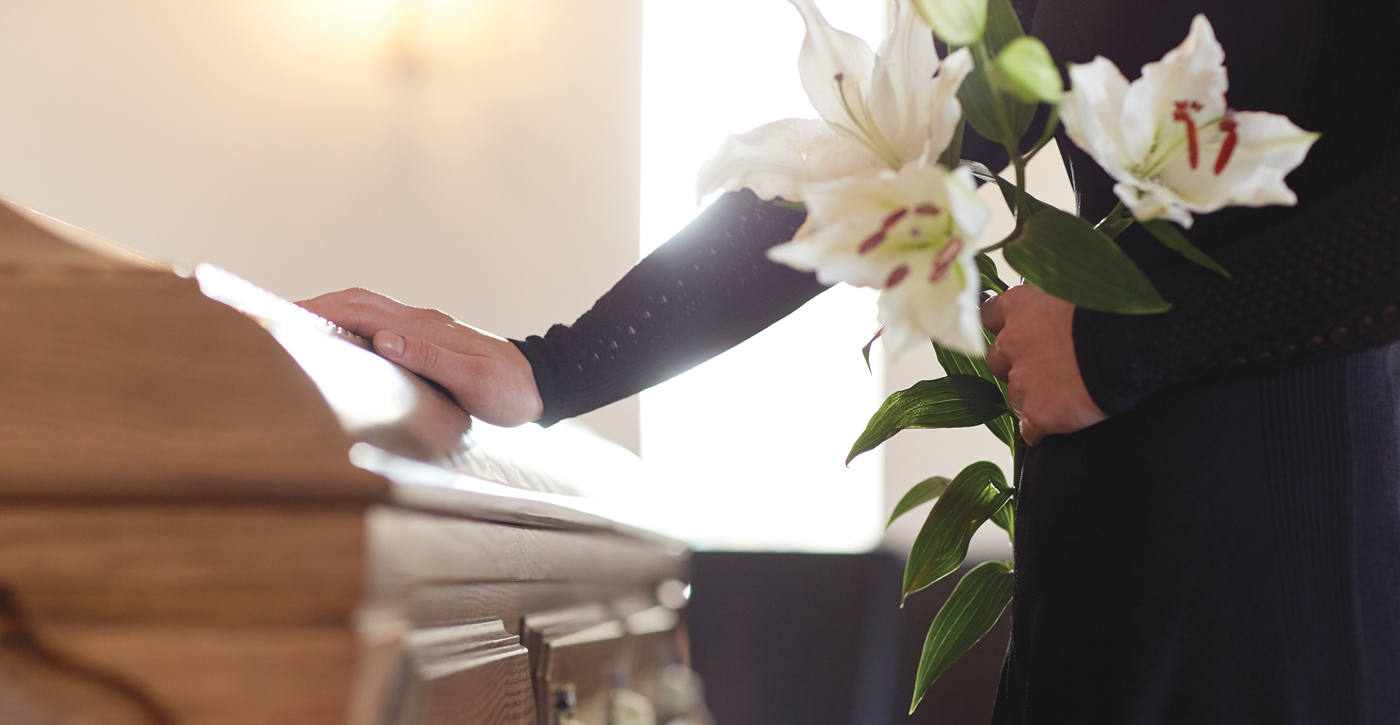
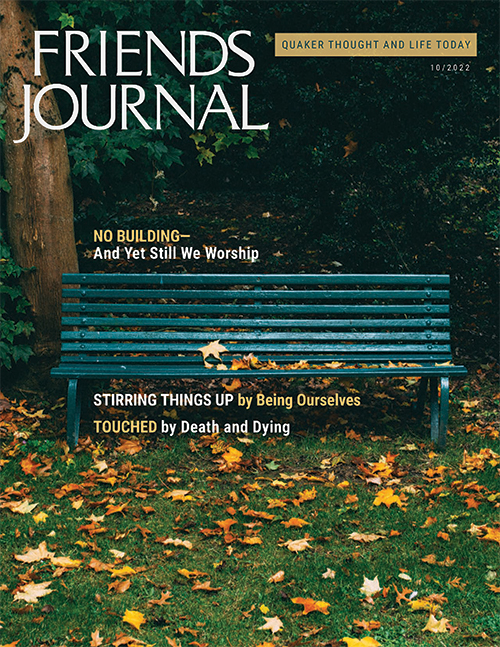
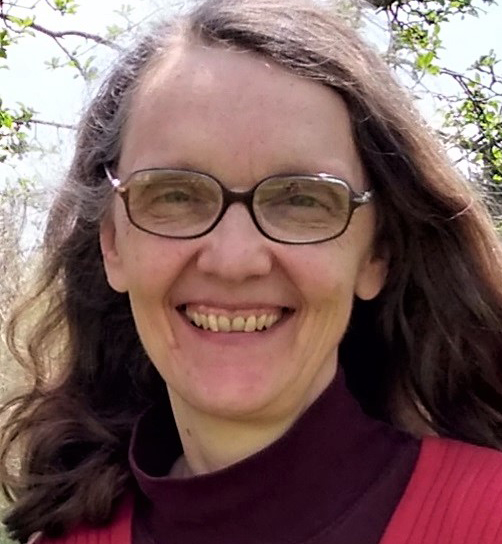
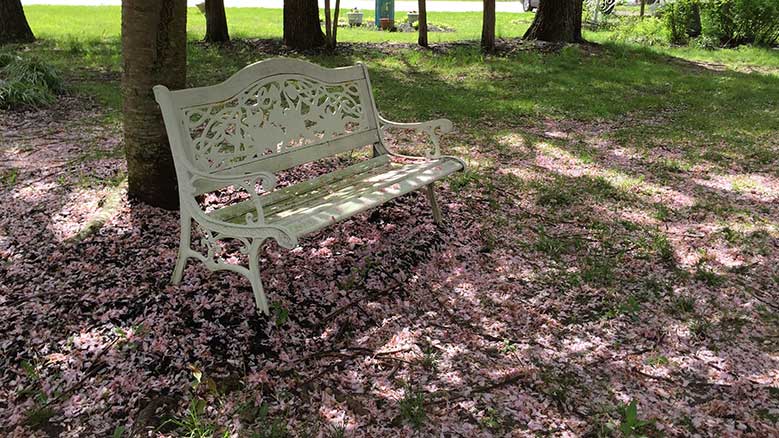
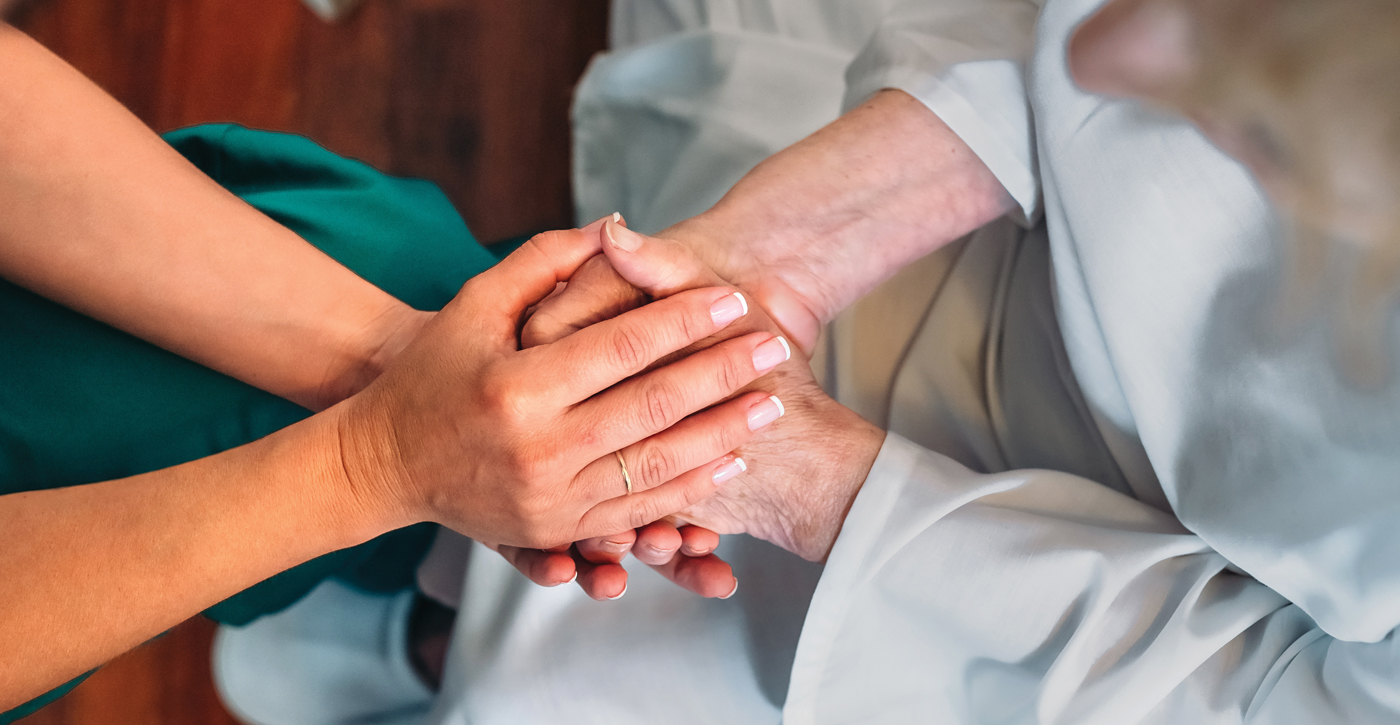
What a beautiful account of your experiences with precious family & friends at their time of moving on…lots to think about! Thank you Marcelle!
Lovely, Marcelle. Thank you.
My sister showed me how to die.
Though she’d been diagnosed with cancer, chemotherapy seemed to be working. Then my daughter told me Susan was suddenly seriously sick.
Seven hours later I walked into Susan’s hospital room. She was staring at blotches on her wrists and palms, but recognized and greeted me as I bent down to her tired face.
I held up fine until one of my oldest friends asked how I was doing. Reality welled up and I sobbed uncontrollably. Then I pulled myself together, and we stood by Susan’s bed.
Cancer and chemo had weakened her immune system, allowing massive infection and widespread, untreatable blood clotting. The only remaining option was palliative care; it could be a matter of months, or of hours. At least her hands, which had hurt because of blood pooled behind the clots, had stopped hurting.
The third day Susan seemed more awake and in less pain. We wheeled her to the cancer ward’s garden and enjoyed the warm September sun. Susan frequently said, “it’s all good,” smiling each time she said it. All while her hands were blackening for lack of blood.
Susan’s demands were simple. “If I can’t get well, I want to go home.” The hospice set up a bed looking out at the backyard she loved, planning to take her there next morning.
But she slipped into a coma that night. Next morning our elderly mother sat beside Susan’s bed, holding a blackened hand, reminiscing through tears. I told Susan that I loved her, and, recalling Buddhist and Quaker teachings, urged her to trust in the universe and seek out the bright light. I quoted her own words, “remember, it’s all good.”
That day she died.
Her passing hurt awfully, and still does. But though the image that comes first to mind is of holding her cold, blackened, hand and looking into eyes that would never reopen, that image always fades into memories of hugs and tears, of love sparkling through tears.
Susan would be pleased at such a legacy, knowing she showed us it is, indeed, “all good.”
Name withheld by request.
Dear Friend in Madison, WI,
Thank you so much for sharing this moving account of being with your sister Susan in her dying and death, and the beautiful legacy she left you.
Marcelle
Thank you, KG!
Marcelle
Dear Marcelle,
It was a privilege and a comfort to read your account.
love to you, Hollister
Thank you, Hollister!